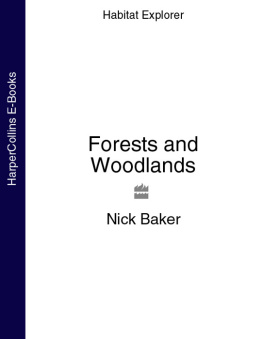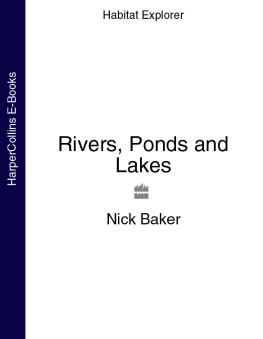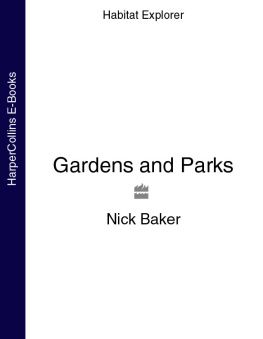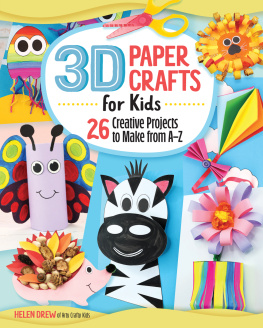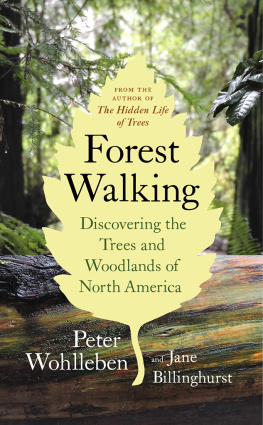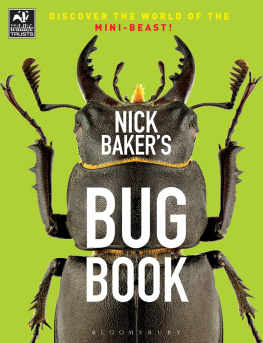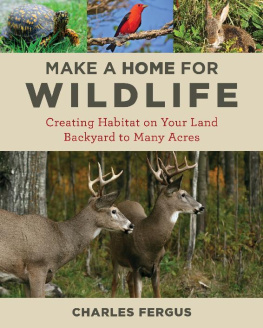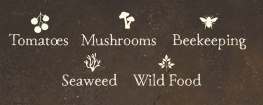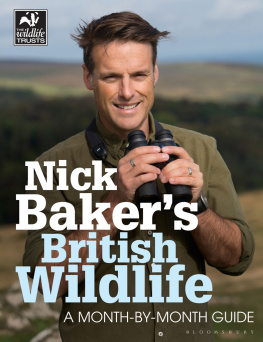First published in 2006 by
Collins, an imprint of
HarperCollinsPublishers
77-85 Fulham Palace Road
Hammersmith
London W6 8JB
www.harpercollins.co.uk
Collins is a registered trademark of HarperCollins Publishers Ltd
Text Nick Baker 2006
All rights reserved under International and Pan-American Copyright Conventions. By payment of the required fees, you have been granted the nonexclusive, nontransferable right to access and read the text of this e-book on-screen. No part of this text may be reproduced, transmitted, downloaded, decompiled, reverse-engineered, or stored in or introduced into any information storage and retrieval system, in any form or by any means, whether electronic or mechanical, now known or hereinafter invented, without the express written permission of HarperCollins e-books.
A catalogue record for this book is available from the British Library.
Editorial director: Helen Brocklehurst
Editor: Emma Callery
Designer: Sue Miller
Photographer: Nikki English, except for those pictures credited below
Flick book illustrations: Lizzie Harper
Editorial assistant: Julia Koppitz
Production: Graham Cook
Photograph credits (b = bottom, I = left, m = middle, r = right, t = top)
Page 9 (tl), 10 (t), 18 (t), 20 (b), 27 (b), 28, 35, 40 (b), 43 (bm), 44 (b), 50 (t), 52 (r), 53, 64 (r): Paul Sterry/Nature
Photographers Ltd; 9 (tr), 56: Laurie Campbell/NHPA; 27 (mr), 51: Colin Carver/Nature Photographers Ltd;
27 (tl): Mike Jones/FLPA; 29, 65 (r): Stephen Dalton/NHPA; 30: Roger Wilmshurst/FLPA; 34: John
Jeffery/NHPA; 36: Roger Tidman/NHPA; 41 (r): Daniel Heuclin/NHPA; 43 (m): Andy Rouse/NHPA; 50 (b):
Nigel J Dennis/NHPA; 54: E A Janes/Nature Photographers Ltd; 61 (I): Philip Newman/Nature Photographers
Ltd; 61 (r): Ernie James/NHPA; 62: Guy Edwardes/NHPA.
Source ISBN: 9780007207657
Ebook Edition December ISBN: 9780007563449
Version: 2013-01-15
HarperCollinsPublishers has made every reasonable effort to ensure that any picture content and written content in this ebook has been included or removed in accordance with the contractual and technological constraints in operation at the time of publication.
For my wild friend Ceri, a small token of my appreciation of you. You saved me!
Contents


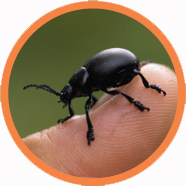

Looking up through the bright green, newly unfurled leaves of a beech woodland, you may feel like you are in a huge cathedral gazing up through the stained glass windows ones that are made up of many shades of green. But we chop these trees down, use them as crops or as things to climb. Woodlands are places to walk the dog, they form barriers and boundaries but they are the lungs of the planet.
Trees are amazing light machines. Just like other plants, they trap the Suns energy by using it to combine water and carbon dioxide gas in the air to form sugars. But trees do it on a much bigger scale. Each one is a light factory, with tiny microscopic work stations inside each leaf. While looking up through the canopy, hold a leaf in your hand and imagine the scale of production. Think of the millions of little cells in the leaf and then multiply by the number of leaves you can see all around you. Just half a hectare of woodland is such an effective factory that it produces over 6,000 tonnes of roots, wood and leaves every year!

To smaller beasts, a field of grass is like a forest, but a forest, wood or copse is a unique experience for human-sized creatures. This is exactly what this book is about: exploring our woods, forests, hedgerows and some of the habitats that are associated with them.
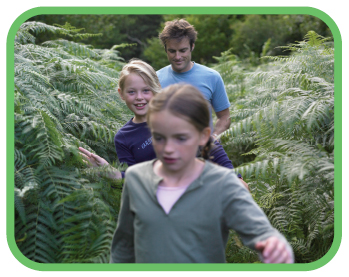
The book is divided into chapters that roughly reflect the different levels of woodland. Imagine the woodland as if it was a layer cake. If you were able to take a slice through it, you would see a pattern to the apparent tangled mass of life.
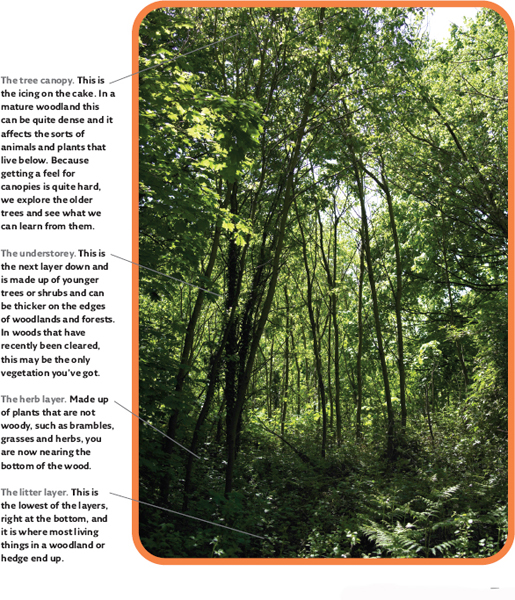
As a youthful naturalist with, I assume, little pocket money, you will be relieved to know that when it comes to specialist equipment, there really isnt much needed! Most can be put together and constructed or improvised from items found under the sink, in the shed or under the stairs. In fact, the most important tools you need to learn to use are your own senses; but more about that later. For now, though, here is a short list of things that I find useful in an everyday kind of way when exploring woodland.
Bamboo canes These are handy things for many of the activities in this book and they are useful for creating an extention to your arms! You can tape a wire hook to the end and use it to bend down branches that were otherwise out of your reach or use it to beat branches that are in your way.
Binoculars and magnifying lens Anything with a lens in it to magnify little things or bring distant subjects closer is going to be a relatively expensive bit of kit compared with the rest of the equipment you might have with you. But if you can possibly afford it, they are really worth investing in and there are many different kinds at prices to suit all sizes of pocket.
Clear plastic containers These can be anything from purpose-made specimen tubes to old 35mm film canisters and empty jam jars. They are handy for collecting and observing specimens in. Plastic bags are also very useful and have the added advantage of being lightweight and folding flat in your pocket.
Field guides Always handy, but if you take good notes, they can be consulted once you have got home and so save you space in your pockets or your day pack.
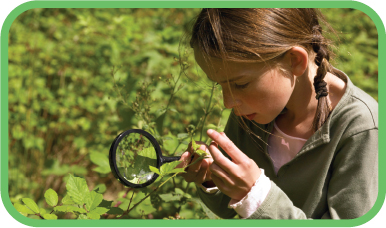

Gaffer tape Many of the things you build or construct in this book use this wonderful stuff. It is also excellent for making repairs and quick fixes.
Pen and paper (notebook) It is a very useful skill to record your observations, never mind how seemingly insignificant they may be. All the best naturalists do it.
Sieve Useful for panning through leaf litter and soil. This is one of the best ways to find the over-wintering pupae of many moth species.
Back pack Finally, you need something to put all this stuff in! Make sure its large enough to carry everything, but that its not so heavy it spoils a day out in the woods.

